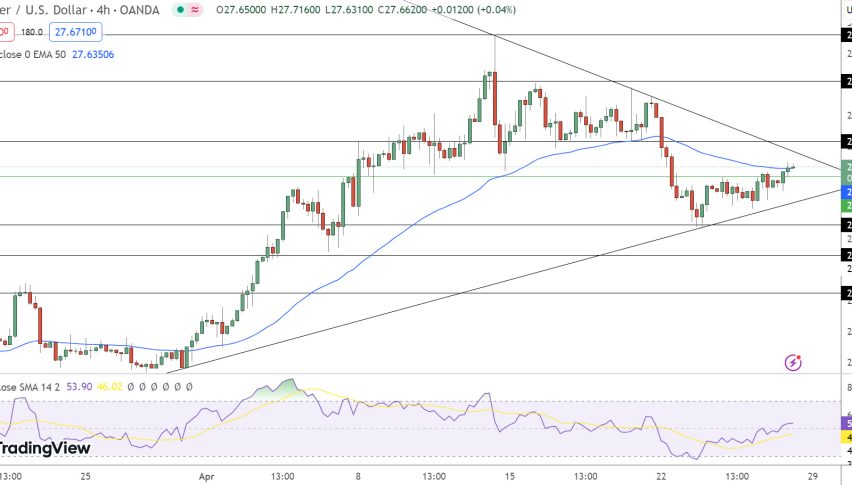British Pound Volatility Multiplies Dramatically; The USD/CAD Becomes the Next Major Pair to Break Out
Before the amazing pound ‘flash crash’ on Friday morning during the Asian session, retail positioning on the GBP/USD was very extreme. For every trader who held short exposure on this pair, there were no less than six traders who were engaged in long positions. This is a good example of retail traders trading against a major trend and losing money to more experienced traders. If you do the calculation, you’ll notice that more than 85% of retail traders were long this pair before the crash happened. The crash greatly reduced this number to 2.3 long positions for every short one. This means that 69.7% of retail traders are now holding long positions, which is still considered to be an extreme reading, but not nearly as extreme as before the flash crash. Perhaps it doesn’t seem like a big ‘before and after’ difference, but it surely is. So what can we deduce from these figures? Retail traders were hit hard by the flash crash which took out many long positions. Some traders’ stop losses were triggered, while others received margin calls and their positions were force-closed.
What exactly caused the crash is not clear, but some say that algorithmic trading could have played a role. Of course, there are many uncertainties that surround the Brexit theme, but there wasn’t a specific fundamental catalyst on Friday morning that could justify a drop of this magnitude. To see such a liquid currency crash like this is remarkable. Surely the thin market conditions exacerbated the shock – it was during the Asian session, and also on an NFP Friday – the perfect market conditions for a flash crash. Let’s look a few charts:
GBP/USD Daily Chart
At the moment the current market price is far from the range floor from where it broke out of on Monday last week. I would like to see a retest of this breakout level, but maybe the price will not visit it soon. If the price manages to reach this level again, it might offer a great opportunity to get short again. I had some short pound positions running when the flash crash happened, but they were all closed when I took profit on them. The currencies I sold the pound against are the US dollar, Japanese Yen, and the Euro. At the moment I’m on the lookout for good opportunities to enter short trades on the pound again. I just don’t like chasing the price at this stage. Like on this daily chart of the GBP/USD, it is evident that the price is really oversold at the moment. To make it even clearer to see this here is the same chart with the RSI oscillator placed on it:
GBP/USD Daily Chart
Here you can see that the RSI indicator is giving us an oversold reading. Below 30 is considered oversold. Now when an instrument is trading at oversold levels, it doesn’t mean that it’s going to pop higher at any moment, but a correction is more likely to occur when markets are overbought or oversold. Currency pairs can remain in an oversold or overbought condition for extended periods of time. Look at the following example:
GBP/USD Daily Chart (2012/2013)
Certainly, the price could continue trading south without a meaningful retracement for quite a while. You could perhaps make some money if you entered short at the current price, but maybe you could catch a better opportunity if you first waited for a retracement to take place. Here is an example of what I’m talking about:
GBP/USD Daily Chart (2014)
Let’s talk about the candle marked ‘‘let’s pretend this was Friday’s Candle’’. As you can see in this example, there was some really strong selling which could easily have enticed traders to chase the bearish momentum. This large red candle basically closed on the low of the day, which tells us that the sellers remained in control until its close. We call this a shaved bar (it doesn’t have a wick on its lower end). Many times this type of candle indicates that further losses may be on the way. If you look at the fifth candle before the one I marked on the chart, you’ll see that it’s also a bearish shaved bar. You will also notice that you would have made a good profit if you entered short at the close of this candle, as the price continued to decline. There are some major differences between these two candles, however. The first one was formed after a recent retracement to the 20-EMA had occurred, and is relatively close to the 20-EMA, but the second one is far from it. The first shaved bar didn’t close with RSI being in oversold while the second one did. If you had entered short on the close of the second shaved bar, the market would have moved against your trade by 260 pips before turning around again. You would probably have been stopped out before the resumption of the downtrend.
Now look at the aggressive and conservative entries marked by the red circle. You will notice that the market moved in favor of both short trades first before any retracements occurred. These are the kind of setups we’re looking for. Here we could have entered high probability trades, and used much tighter stop losses.
Of course, there are other ways to play this pair in the week ahead. Not all traders like trading off daily charts. There could be some really great scalping opportunities on the GBP/USD this week. Here is an example of how to trade Cable off a 5-minute chart:
GBP/USD 5-Minute Chart
Here you can see a series of impulsive and corrective waves. Remember that we only want to trade in the direction of the prevailing trend. You’ll see that in this chart the price is below the 4-hourly and hourly 20-EMAs (the green and red exponential moving averages). We can also see that there was determined selling and that the price traded mostly below the 20-EMA (the blue exponential moving average). In the three red circles, you’ll notice candles with upward wicks that indicate to us that sellers were re-entering the market. Notice that these candles occurred either at the 20-EMA, or very close to it. The idea is to wait for a candle like these and to enter a short position when the price breaches the low of this particular candle. This means that you’re trading with confirmation that there’s at least some kind of selling present in the market. So if the price continues to rise, and fails to breach the signal candle’s low, your order will not be triggered. When using this approach, you can place your stop loss a few pips (e.g. 3 pips) above the high of the signal candle, and a take profit of at least twice size of the stop loss distance. You can also trade without a take profit and just trail your stop loss. You can then scale out of half the position when the trade reaches twice the stop loss distance and let the other half go for a home run. There are several different ways to enter and manage trades like these, and how you do it will depend on your trading style and personality.
USD/CAD
USD/CAD Daily Chart
At last, we’ve broken out of this triangle! Although the US dollar posted a poor performance on Friday, the Canadian dollar was even weaker on the day. What makes this breakout so appealing, is that it has overcome a confluence of two important resistance elements namely the 200-day moving average, and the top of this triangle. On Friday the pair closed firmly above both of these. This is the first close above the 200-day moving average in 148 trading days. Remember that this moving average is widely used as a trend filter by investors and speculators. You can be sure that Friday’s strong close will not go unnoticed by the large institutional market players. Here is a closer look at the same chart:
USD/CAD Daily Chart
Notice how the price rejected off the triangle resistance and the 200-day moving average several times. The price often bounces off an important resistance (or support-) level before breaking through it.
I wouldn’t advise traders to enter long positions on this pair right now. It is always safer to wait for a price retracement and a favorable candlestick formation before engaging in new trades. Let’s look at a weekly chart:
USD/CAD Weekly Chart
The long-term trend is clearly bullish, and perhaps we could soon encounter some impulsive buying again.
At the moment the retail sentiment on the USD/CAD is bearish, which indicates that the pair is likely to continue its advance. Remember that retail sentiment is used as a contrarian indicator. Currently, there are 1.888 traders who are short for every trader who is long.
Friday’s Canadian dollar weakness is probably linked to the decline we saw in the oil price. The Canadian employment change numbers that were released on Friday (at the same time as the weak US NFP numbers) came out much better than expected. Nevertheless, the Canadian dollar was overpowered by the US dollar, even though the NFP numbers were quite disappointing. The Canadian dollar is definitely showing clear signs of weakness, and if we get a deeper pullback in oil prices over the next week or two, the USD/CAD may offer some juicy setups for long trades.
At the moment the GBP/USD and USD/CAD are the only major pairs that really appeal to me. The other major pairs lack clear direction.
Economic news and other events
The most important news event to watch this week is the latest FOMC meeting minutes which are released on Wednesday at 18:00 GMT. Besides this, we have US Core retail sales, PPI, and retail sales numbers to watch on Friday at 12:30 GMT.
Tomorrow we have holidays in Hong Kong, Canada, and Japan which may cause market conditions to be thinner than it normally is.
Best of luck with your trading!




















